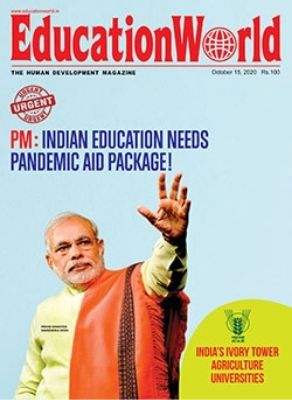
This despite several education activists pleading with the PM to immediately address the nutrition and education deprivation suffered by millions of children enrolled in government schools. Moreover, surely it’s self-evident that under-privileged children don’t have digital devices or Internet connectivity to access the free online classes the government is beaming on its free online learning portals. Already the prolonged closure of schools has forced millions of children to drop out of the education system and join the country’s massive child labour force.
The Central government needs to urgently allocate a pandemic aid package for education to ensure learning continuity for all children, especially those in government schools. Several countries have made generous allocations to keep their education institutions alive during the pandemic era. India can and must do the same.
Ajay Mathur
Gurugram
PM: Act urgently!
Your cover story ‘Prime Minister: Indian education needs pandemic aid package’ (EW October) exposes the Narendra Modi-led BJP government’s willful neglect of the pandemic-battered education sector.
In India’s 1.2 million government schools teaching-learning has all but stopped since the nationwide lockdown was imposed in end-March, and an estimated 20 million children have dropped out of the school education system.
Worse, because of the closure of 1.4 million anganwadis, youngest children are being deprived of nutrition, and in government primary schools, of their free mid-day meal for the past six months. The situation of private schools is no better as hundreds of budget private schools have shut down across the country with managements reeling under massive fees revenue loss.
Prime minister Narendra Modi should urgently heed your appeal before it’s too late!
Gargi Banerjee
Kolkata
Perception flaw
Your well-written feature ‘India’s ivory tower agricultural universities’ (EW October) did an excellent job of suggesting ways and means to improve productivity of the country’s agriculture sector and implementing the Union government’s recent initiatives for liberalising and deregulating the sector. It highlighted the hitherto glossed over issue of farm-academia gap in this crucial sector that provides employment to the majority of Indian citizens.
Despite the arguments presented by eminent academics and industry stalwarts in defence of the Indian Council of Agricultural Research (ICAR), I believe there is a fundamental flaw in their perception of the role of publicly funded agriculture studies and research. If it is compulsory for MBBS graduates of government-funded medical colleges to serve a minimum tenure in rural areas, why should the same not apply for graduates/students of government agricultural universities? How good is research and innovation if it does not solve problems at the grassroots level?
These are questions that should cross the minds of bureaucrats responsible for framing policies for these ‘ivory tower’ institutions of agriculture education excellence.
Chandrika Menon on email
Pathetic outreach
I am a regular reader of EducationWorld. Your excellent Special Report ‘India’s ivory tower agricultural universities’ (EW October) has streamed a strong spotlight on the pathetic outreach of 71 government-funded agriculture universities which have failed to improve the country’s productivity or GDP. An eye-opener indeed!
Indira Sawhney on email
Miracle Foundation lead
I enjoyed reading EducationWorld’s September issue. The articles are well-researched and very informative and inspirational. I especially liked the People story on Nivedita Das Gupta, country head of the Miracle Foundation which is providing education and nutrition to abandoned and orphaned children living in child care institutions.
We need many more such activists to come forward and provide financial support to underprivileged children who have been especially hit hard by the Covid-19 pandemic.
Ranjani Lakshmikanth
Bengaluru